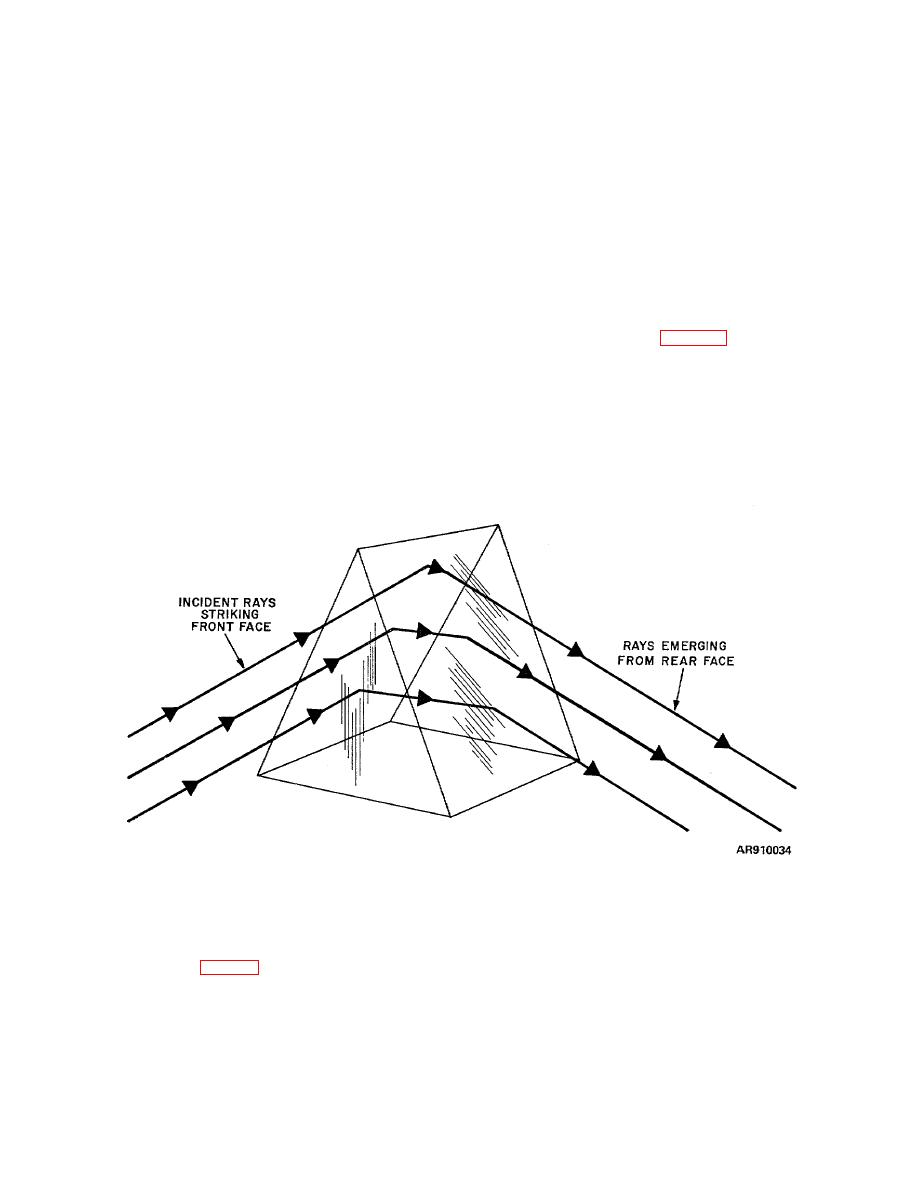 |
|||
|
|
|||
|
Page Title:
Figure 2-28. Path of light ray through prism. |
|
||
| ||||||||||
|
|
 TM 9-258
d. Over large areas of heated sand or over water,
of glass with parallel surfaces because the light which
penetrates the base or thicker part of the prism must
conditions are such as to produce strata or layers of air
travel longer and at less speed in an optically denser
differing greatly in temperature and refractive index.
medium than the light passing through the apex or
Under such conditions, erect or inverted and sometimes
thinner part of the prism. Rays of light emerging from a
much distorted images are formed which can be seen
plate of glass with parallel surfaces always travel in a
from a great distance. These images are known as
parallel direction with the incident rays; rays emerging
mirages.
e. On a hot day, the columns of heated air rising
from a prism always travel at different angles from the
incident rays.
from the earth are optically different from the surrounding
b. The laws of refraction apply to prisms just as
air and rays of light are irregularly refracted. The air is
they do to plates of glass with parallel surfaces. These
turbulent and conditions under which observations are
laws may be applied to plot the paths of light through any
made are changing all the time. Consequently, an object
prism.
viewed through such layers of air appears to be in motion
c. When a ray of light strikes the surface of a
about a mean position. In such cases the air is said to
prism, the refracted ray (fig 2-28) is bent toward the
be "boiling" or the image is "dancing" due to "heat
normal according to the law of refraction. The refracted
waves." This condition is particularly detrimental when a
ray is bent away from the normal on leaving the prism.
high-power telescope is employed.
Under such
Thus, the path of the ray is deviated at the first surface of
conditions it is usually impossible to use an instrument of
the prism and then further deviated at the second
more than 20 power.
surface. In both cases, the ray is bent toward the
2-14. Refraction Through Triangular Glass Prism.
thickest part of the prism.
a. Unlike a plate of glass, a prism has its faces cut
at an angle. Refraction through a triangular glass prism
differs
from
refraction
through
a
sheet
Figure 2-28. Path of light ray through prism.
front surfaces will pass through the prisms. The rays
2-15.
Refraction Through Lenses.
emerging from one prism will cross the emergent rays of
a.
Convergent Lens. If two prisms are
the other prism.
arranged base to base (fig 2-29), rays of light striking the
2-20
|
|
Privacy Statement - Press Release - Copyright Information. - Contact Us |